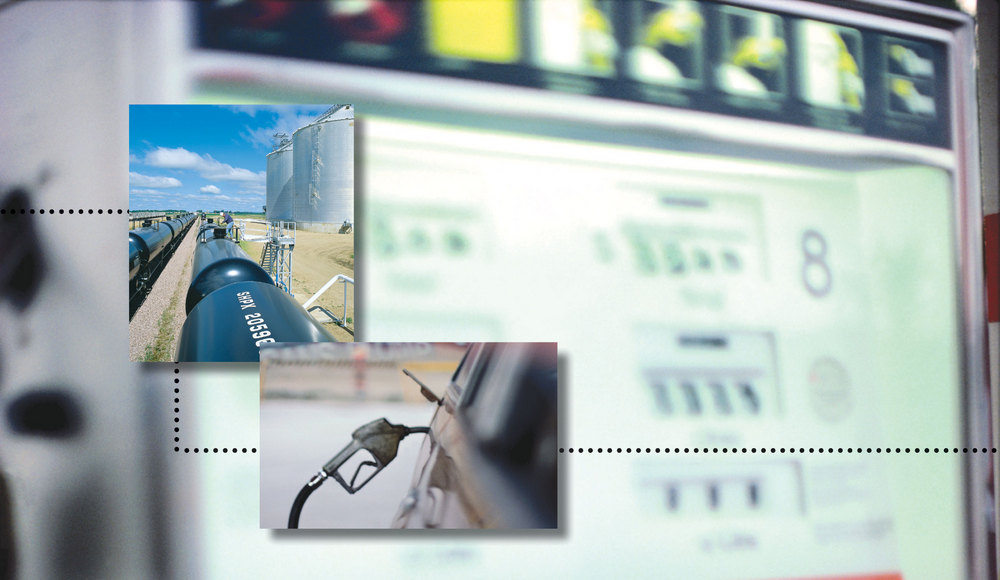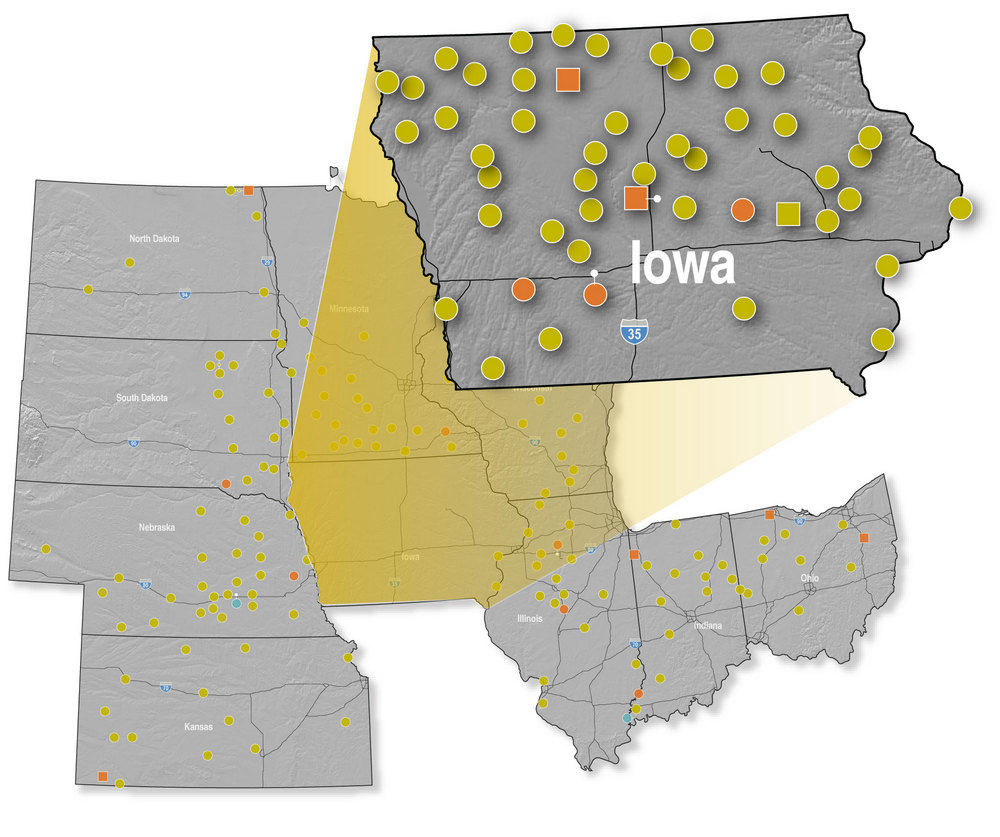Iowa Does Its Part in Encouraging Adoption of E15





May 13, 2011
BY Lucy Norton
Today the state of Iowa’s renewable fuels industry is strong and looking to the future. Iowa leads the nation in ethanol production with 41 ethanol production facilities with the combined ability to produce nearly 3.7 billion gallons of ethanol annually.
While the future holds many opportunities, there are significant challenges as well. We must work to knock down the artificial barriers that hold back renewable fuel use. America has smacked into the E10 blend wall, and the federal blenders tax credit for ethanol is set to expire at the end of this year. So, it’s obvious that 2011 is the year to seriously evaluate ethanol’s future.
When the U.S. EPA announced the approval of E15 for 2001 and newer model vehicles and light-duty trucks, it opened the door for an exciting market for ethanol to help overcome the E10 blend wall. With 85 percent of all vehicles on the road by 2014 capable of using E15, it’s time to start the groundwork for bringing E15 to motorists.
When E10 was introduced in the 1970s, Iowa led the nation to embrace this new fuel produced from Iowa’s farm fields. The Iowa Renewable Fuels Association is working to put Iowa in position to lead the nation again—this time in embracing E15. Adoption of 15 percent ethanol blends opens up a new 7 billion-gallon-per-year market, which is twice the size of Iowa’s 2010 ethanol production. As ethanol acceptance has grown, E10 is no longer considered a “boutique” fuel. Now it is the base fuel. So, it’s time to move on to the next generation of ethanol blends and strive for adoption of E15.
The challenge for E15 is making it widely available so every motorist driving a 2001 and newer vehicle has the option to buy this higher-octane, lower-cost fuel. Retailers and convenience stores can make this happen. Iowa should seize the opportunity E15 offers to expand the ethanol market and keep more dollars in the local economy, since Iowa imports most of its energy needs.
Policies for incentives and financial assistance for infrastructure build out are needed to encourage retailers to offer E15. While EPA approval of the fuel creates an opportunity, E15 becomes a reality for consumers only if retailers make the fuel available. Retailers are understandably concerned about misfueling penalties and consumer lawsuits. While we can debate forever the likelihood of these perceived threats, there is no denying that the concerns will hold back many retailers from offering E15.
Why? Today, most Iowa fuel stations have two gasoline storage tanks—one holding non-ethanol fuel, and one holding E10. For E15 to become readily available in the near term, a retailer is going to have to fill one of those two tanks with E15. Providing some type of meaningful E15 incentive can provide a counterbalance to liability fears and reward retailers who decide to offer their customers E15.
The IRFA is working to prove to retailers that E15 is a wise choice and that customers will buy E15 if they offer it. The IRFA recently launched a retailer campaign driven by their potential E15 customers. Motorists are dropping off cards at their local retailers informing them that they “own a 2001 or newer vehicle and that they would buy E15 when it’s available.” It also tells retailers they want more American fuel choices that are better for the environment.
E85 also paints a bright future for ethanol. With the commitment by the three major U.S. automakers to make 50 percent of their 2012 production as flex-fuel vehicles, more motorists will have the option to purchase renewable fuels. To make this happen, we need to move toward every gas station in Iowa having a flex-fuel pump that offers not only E85, but midlevel ethanol blends such as E30 and even the new E15 blend. This is how we break the Big Oil monopoly over consumer fuel choice and high-priced gasoline.
It’s time to take a serious approach to cutting our addiction to foreign oil and it’s time to seriously commit to locally-produced renewable choices. By spending $28 billion a month on imported oil, the U.S. is transferring a massive amount of wealth during a period of economic hardship. Over the past 30 years, this reliance on foreign oil has cost U.S. taxpayers over $7 trillion.
We’re taking a 10 percent bite out of foreign oil, thanks to E10 use, which currently eliminates the need for 445 million barrels of imported oil annually, the equivalent of our imports from Saudi Arabia each year. Just consider how many barrels of oil could be eradicated and how many dollars would stay in this country if another 7 billion gallons of ethanol were sold as E15.
E15 is not the only challenge facing the ethanol industry today. While the federal renewable fuels standard (RFS) expands the market for ethanol, anti-corn environmentalists convinced policymakers to cap corn ethanol at 15 billion gallons a year. The RFS calls for the growth in renewable fuels production above 15 billion gallons to be from “advanced biofuels”—biofuels that achieve a 50 percent reduction in greenhouse gas (GHG) emissions compared to a baseline 2005 petroleum fuel. But the fine print in this regulation states that corn ethanol doesn’t qualify regardless of its environmental performance. No matter how much corn ethanol may reduce GHG emissions in the future, it is statutorily forbidden from ever participating in the advanced biofuels part of the federal RFS.
This is an unfair characterization of ethanol because it is continually advancing in reducing greenhouse gas emissions worldwide. According to (S&T)2 Consultants Inc., ethanol has a positive impact on reducing global GHG. In 2010, world ethanol production is estimated to have reduced GHG emissions by 101 million tons. This reduction would be equal to taking 18.7 million cars off the road, which we know will never happen. So why not boost ethanol use as an alternative to forcing mass transit and recognize ethanol for what it is—an advanced biofuel—that has far superior environmental benefits over petroleum-based fuels?
The excitement raised by prospects for increasing ethanol production to meet new demand is tempered by the continual criticism by those who don’t understand—or choose not to—the role of corn in providing food, feed and fuel. What the naysayers choose to overlook is that one-third of every bushel of corn processed into ethanol also produces a high-energy, protein-rich feed ingredient known as distillers grains. This distillers grain is feeding livestock around the globe and reducing the cost of producing beef, poultry and pork. And, currently distillers grains replace 1 billion bushels of corn previously used as livestock feed.
As for the claim that ethanol takes a bite out of food supplies, ethanol production actually uses only 3 percent of the world’s feed supply on a net basis. So the feed grains mostly consumed as human food—wheat and rice—are not affected by ethanol production. Through new ethanol production technology, seed genetics and agriculture production efficiencies, no new acres have been needed to produce ethanol. These trends will continue, so there’s no better time to advance domestic, renewable energy production.
The benefits of using more ethanol are significant to this country and Iowa’s future. In addition to supporting 49,000 jobs and providing $2.4 billion in income, Iowa’s ethanol industry contributed $588 million in state tax revenue last year. If Iowa takes the lead in developing new markets for ethanol, it will provide economic stability, keep dollars from being sent to unstable oil-producing nations and improve the environmental health of this nation.
Author: Lucy Norton
Managing Director, Iowa Renewable Fuels Association
(515) 252-6249
lnorton@iowarfa.org
Advertisement
Advertisement
Upcoming Events





